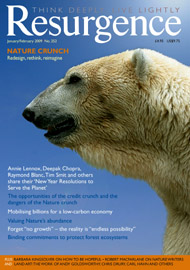FOUR YEARS AGO a woman known as Jyoti, founder of the Center for Sacred Studies in Sonora, California, an organisation dedicated to preserving Indigenous ways of life and prayer, convened a meeting of an impressive group of women from around the world. For many years, Jyoti and other members of her Kayumari community had been inspired by the vision of a circle of women, all elders, who would come together to bring guidance and healing to the planet.
When Jyoti travelled to Africa and the Brazilian Amazon in 2002 and shared this vision, first with Bwiti elder Bernadette Rebienot in Gabon, and shortly afterwards with traditional healer Maria Alice Campos Freire in Amazonia, both became extremely animated as they had the same vision. Jyoti knew that the time had come to bring grandmothers from all four corners of the world together, coinciding with many ancient prophecies: “When the Grandmothers from the four directions speak, a new time is coming.”
Thirteen grandmothers, all of them respected healers and medicine women in their own communities, as geographically distant as the Amazonian and central African rainforests, the Arctic Circle, the plains of North America, and the mountains of Tibet, accepted her invitation.
As the International Council of Thirteen Indigenous Grandmothers, they gather every six months to share in the ancient practices and ceremonies of their different communities and revive the traditions, rituals and medicines that can help heal the critical ills of the Earth and her peoples. At the fifth Council gathering in South Dakota, Marianna García Legar, founder of the women’s collective Arboleda de Gaia, invited the Grandmothers to bring their ancestral wisdom to Europe via a gathering in Spain in July 2008.
The Grandmothers accepted, and vowing to make the most of this historic trip to the land of the conquistadors, they also travelled to the Vatican to hand-deliver a letter to Pope Benedict XVI requesting the revocation of the Papal Bull of 1493, an ancient edict that had laid the foundation for the genocidal onslaught on millions of Indigenous people worldwide.
The message the Grandmothers brought to Spain and the whole of Europe is that now is the time to make a choice about how to live and stay alive on the planet. Their sense of urgency comes from direct experience: from the poisoning of waters in South Dakota due to uranium mining, to the dumping of radioactive waste in Tibet, alcoholism and drug addiction on Native American reservations, or the appropriation of native plants and knowledge in Amazonia.
What the Grandmothers advocate is a spiritual activism, deeply rooted in the natural world. At the core of their message is the reminder of the most basic principle of Indigenous cultures: that all of life is sacred. When Grandmother Maria Alice speaks about the qualities of Mother Water, when Hopi elder Mona Polacca speaks about the teachings of Mother Earth, when Grandmother Bernadette speaks about the language of the fire, the wind, the plants, or when the oldest Grandmother of the Council, Agnes Baker Pilgrim, speaks about the journey of the salmon, their words reveal an astounding sense of intimacy and communion with the natural world. Far from seeing Nature as a mere commodity or natural resource, the Grandmothers guide us towards a relationship of reverence and union with the elements, which impart their wisdom to those who are open to listen and learn.
When asked “How can we make a difference?”, Grandmother Mona, in her beautiful simplicity, replies: “All of us can be the ones to make a difference, even from the moment you rise in the morning, the way you use the water, the way you breathe this air, the way you greet this day, the sunlight, the way you touch this Mother Earth. All of us, we can do that.”
At the heart of all the environmental and social projects in which the grandmothers are involved is a deeper message: that the solutions to today’s problems lie in a profound shift in the way we see the world, in a spiritual reconnection to ourselves, to our brothers and sisters everywhere, and to the Earth.
In original tribal cultures, the Grandmothers’ Council was honoured as the final authority on most tribal matters. Their decisions were based on a deep consideration for the consequences of their actions on the next seven generations. Bernadette says that grandmothers of Gabon regularly gather together in the forest to share their visions and pray for world peace and the wellbeing of their people. “In Gabon, when the Grandmothers speak, the President listens.” In Borja, Spain, one of those listening was Manuela de Madre, a prominent Catalan politician.
For many people this Council of Grandmothers is an essential part of what is being called the emergence of the ‘Grandmother Archetype’. According to Jyoti the archetypal figure of the wise grandmother “touches and nourishes something very deep in us”. How appropriate that in our hyperactive and adolescent culture which worships youth and superficial beauty, and which for thousands of years has repressed the feminine, the ones to bring us back into balance should be the Grandmothers.
The official website of the Grandmothers’ Council is www.grandmotherscouncil.com.
Update 2024: The International Council of Thirteen Indigenous Grandmothers was the forerunner to the Grandmothers Wisdom Project, which is committed to supporting all people reclaiming their relationship to Mother Earth, calling for a profound transformation in heart, mind and spirit. Find out more about the Grandmothers Wisdom Project: www.grandmotherswisdom.org






